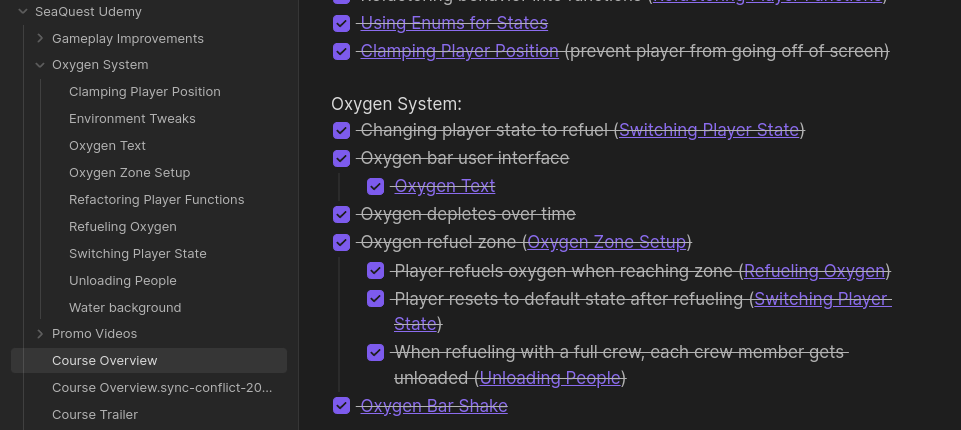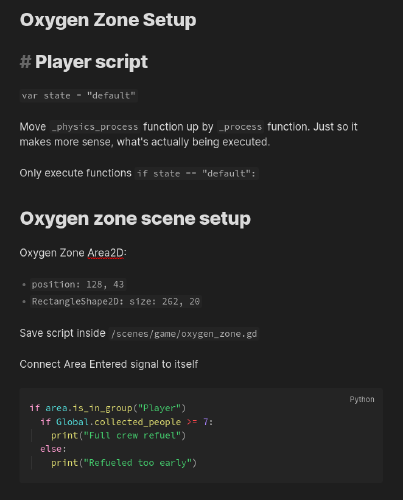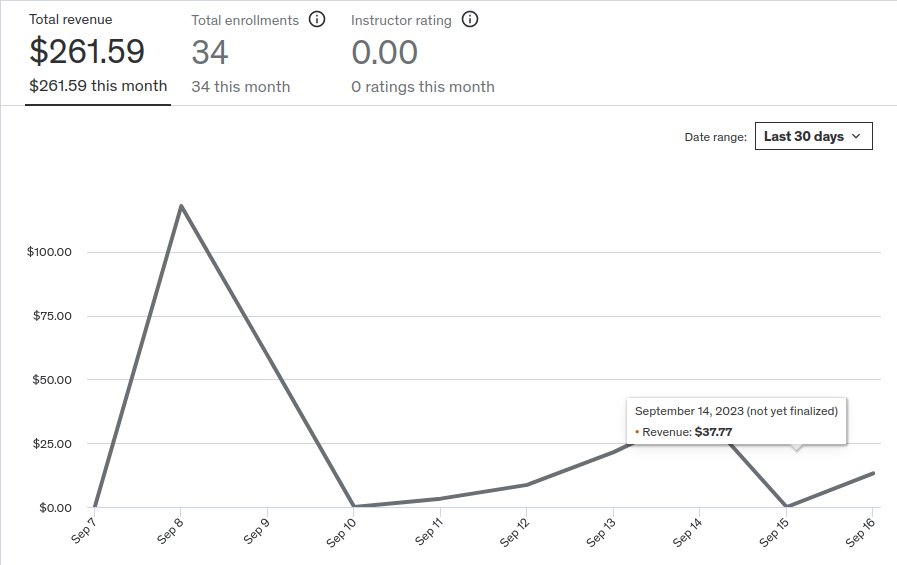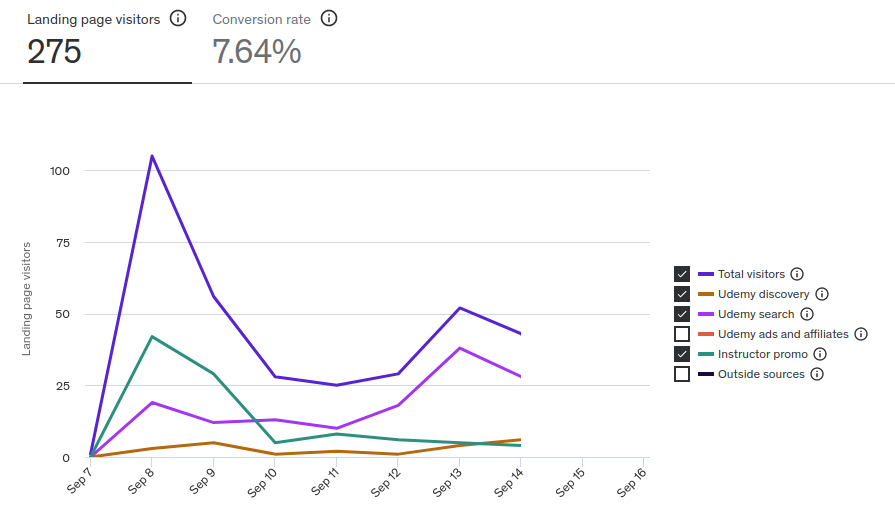Releasing My First Udemy Course
Welp, I finally did it! I released my first Udemy course. And oh boy! I’ve learned a lot along the way. Lots of things that I wish I knew beforehand.
This course teaches beginners how to make video games using the Godot game engine. At the end of the course users have a fully featured game based on the Atari 2600 game SeaQuest.
If this course looks interesting to you, you can pick it up at Udemy here.
Anyways, lets get into the juicy stuff. If you haven’t read my last post about making this game I recommend you read it.
What I Learned
1. Rebuilding the Game
This course builds upon the foundations of the previous game I made. When I started the project, I already had the game made that I wanted to recreate for the course. The only problem was that the game was a mess. It needed to be recreated from the ground up to be made simplier for new users.
So I went to work remaking the game once again from the ground up. Making sure to take simple design approaches and follow Godot’s best practices. This ended up taking quite a bit of time. And by doing so I was sacrificing the time I could have spent making videos, continuing work on the project.
But ultimately what I learned was that remaking the entire project prior to recording didn’t need to happen. Once I began recording videos for the course I found myself still having to make many changes to the project or deviating from the project.
This led to three projects.
- ✅ Fully remade finished course project
- 🎥 The actual course project (the one I’m recording)
- 📝 The planning course project (based on the course I’m recording)
So I would take bits and pieces of code from the fully remade course project and put them into the planning course project. As I’m doing so, I’m taking notes on what I am doing so I can make the next course video.
This is great until I realized the planning course project is drastically different than the one I intended to be the completed fully remade course project. At this point I realized it was a waste of time remaking the entire game prior to recording.
Gamedev is not linear. Each stage of the project code gets moved, refactored, and game elements tend to change overtime. This makes it extremely difficult to plan everything in advance. I made the mistake of overly trying to plan; instead I should’ve just been planning each video individually rather than the whole course.
This takes us to the next thing I learned.
2. Planning
Let me make this clear. The way you take notes doesn’t matter. You just gotta find what works best for you. Too many get lost in the abundance of tools and apps out there. Just find something simple and stick to it, don’t make things harder for yourself.
When I started planning this course, I began by writing my notes on paper. This worked great in the beginning, but it started to become a bottleneck in my process.
I then transitioned to Obsidian. And synced my notes across devices with Syncthing. That way I can easily access my notes on my phone, desktop, and recording computer.
I found this setup to work great for my needs. I made a Course Overview page that contains a checklist of all the things that need to be implemented. Each of these things link back to their own page with instructions that I can follow when making videos.
These notes were extremely useful to me when recording. It helped to keep me on track and ensure I remember to discuss everything needed.
3. Recording/Editing Workflow
This was my process…
- 📝 Plan video
- 🎥 Record
- 🖥️ Edit
- 🔄 Repeat
I mean this worked great at the beginning.
But we all know procrastination a little too well. The problem was that once I finished editing, I would plan the next video and put off recording it. Cause recording videos kinda isn’t my favorite thing. And I would end up wasting quite a bit of time doing anything else but recording.
So here’s the better strategy I found…
Plan out like three or four videos, and record as many as possible in one session. That way I can bulk edit and waste less time procrastinating the next video I need to record. It also gave me a greater sense of accomplishment. I felt like I was getting much more done which helped to motivate me even more.
4. Consider Time
Things always took longer than I thought they would. I would go into a video thinking it would only be 10 minutes to record. Nope! 1 hour later, I was actually done recording.
It’s difficult to take into account the time it takes to teach. Even if what I’m implementing is really small, sometimes teaching it takes way longer than expected.
I expected this course to only take a few months to complete. It took 6 months just to record and edit all the videos. That doesn’t take into account the time it took to remake the project. I probably could’ve had it done sooner, but y’all know life gets busy.
5. Course Promotion
I created a landing page for the course. Cause Udemy is lame and your course needs to be public for people to see the landing page.
Now what I could’ve done was upload an unfinished course, promote that, and continue to update it till I was finished. But I didn’t like the idea of selling this unfinished course to people.
So wait? What’s the point of the landing page? Well I wanted to promote the course before it released. Annnd there’s no reason to promote it, if I can’t send people somewhere where they can find the course.
So I threw up a landing page with an email list. Now people that are interested in the course can drop their email and be notified when it finally drops. Most people probably hate signing up for email lists, I mean I do too! So I tried to sweeten the deal by offering exclusive course sales to those that are email list members.
This is also great cause those that are unsure if they want the course or are looking for a better deal. They can just drop their email, and sometime in the future they’ll be notified and they can make the decision if they still want the course.
With this all setup and going, I created one promo video for the course. The target audience is beginner Godot 4 users. Rather than directly advertising the course, I made a video solving a simple problem many beginners have. I showed them how to make a simple level switching system in their games and at the very end I promoted the course.
From this video alone I believe I got 3 email subscribers initially. Currently I have 7, which probably doesn’t sound great. But keep in mind that these only came from that first promo tutorial, and my course trailer video. If I created more promo content that showcases the email list I believe that would increase this.
In the end I still believe it’s worth while doing the email list. It just could’ve been more effective if I did more promo. For those that are interested I used buttondown.email to handle my email list. I’ve been very pleased with the service so far.
Course Performance
Let’s get into them stats. Now as I am writing this, the course has only been out for just over a week. So it’s a little early to be looking at course performance.
Most of my visitors came on the second day. This was when I released my course trailer video and it led to 10 students enrolled. I also got a few more people on the email list.
For the first few days most of my page visitors came from my own promotions and links. Now that I haven’t really done any additional promotions, most of my visitors are coming from Udemy search.
I believe that for the first week the course has sold pretty well. It’ll be interesting to see if the course improves once it gets reviews.
I’ve learned that it’s better to sell the course through your own promotions and conversion that way you get most of the cut. By using a referral link I was able to get most of the money when someone buys the course. However, when Udemy promotes the course and someone buys it, Udemy will take a large cut around 50%. So it’s important to use referrals whenever you can.
Also pricing in Udemy is kinda wacky. When I created the course I set the price to $59.99. But once it released Udemy was selling it on sale from $20 to $14.99. I thought I did something wrong, but nope, this is how it works. The price that I set to $59.99 is just a backup price. Most of the time Udemy is going to automatically try to find the best price of the course that’ll maximize profits. You can also plan on the course being on sale for $14.99 quite a bit of the time as well. Udemy is constantly running site wide course sales, so plan on selling your course at a discount a lot. There’s very few people that’ll actually buy the course full price.
Conclusion
Everything that I’ve learned:
- Don’t overplan, plan for each video individually
- Take notes for each video and follow them while recording
- Record videos in bulk, then edit
- Teaching usually takes longer than expected, take that into account
- Use an email list to help drive additional course sales
- Promote the course using referral links to get a bigger pay cut
- Udemy chooses the price of your course
- Site-wide course sales are constantly running
If this course sounds interesting, you can find it on Udemy here.
Hope this was helpful! Thanks for reading! :)




